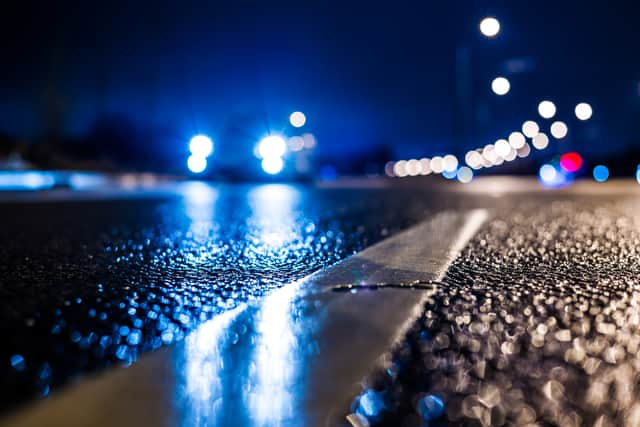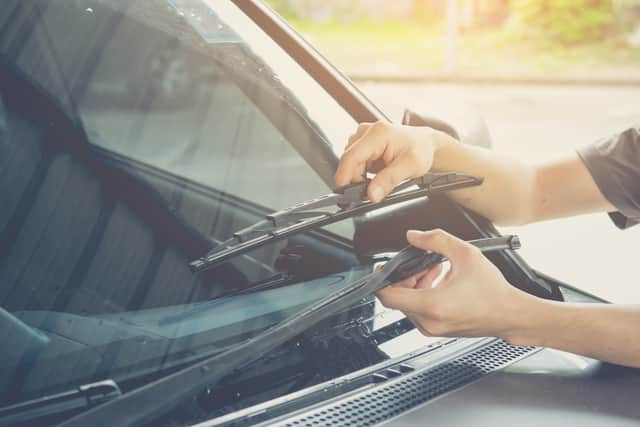Road accidents ‘jump by 22%’ as clocks go back - here’s how to stay safe in the dark
and live on Freeview channel 276
The end of British Summer Time time saw a sharp jump in the number of road accidents last year, according to new data.
As the UK gets ready to put its clocks back an hour this weekend, insurance figures from Tesco Bank reveal a 22% increase in claims in the week after the clocks went back in 2021 compared with the week immediately before the change. The figures come at the same time as safety experts warn that darker evenings and more unpredictable weather could put road users at more risk, and offer advice on how to stay safe.
Advertisement
Hide AdAdvertisement
Hide AdDave Thompson, claims director at Tesco Bank commented: “The clocks going back plunges evenings into darkness and as drivers adapt to the changed conditions, there is a rise in the number of road accident claims. Journeys like school pick-ups or heading home from work, usually made in the daylight, are now done at dusk or under the glare of headlights.”
Jonathan White, legal and compliance director at National Accident Helpline said that the shortening days brought a number of challenges for motorists. He told National World: “Compromised night vision, fatigue and the glare of flashlights are just some of the risks we will face. Dark nights and mornings compromise our depth perception and peripheral eyesight, and it can be difficult to decipher how close traffic is around you. The glare of headlights can also temporarily impair vision.”


He added that it was not just a lack of light that could lead to more accidents, commenting: “The increase in poor weather at this time of the year means you may find yourself driving in heavy rain, fog, snow, or ice. As a result, drivers need to take additional cautions to minimize the risk of dangerous or fatal accidents.”
In light of the problems posed by darker days and nights we asked Jonathan and Dave for their tips on how to stay safe when driving in the dark.
Keep your car clean
Advertisement
Hide AdAdvertisement
Hide AdPoor weather and salt on the roads mean cars get dirtier during winter months, at exactly the time when it’s most important to keep your car clean. Being able to see and be seen clearly is vital to staying safe, so it’s important to keep your car’s lights and glass clean and in good condition.
Jonathan says: “Keeping your windscreen and headlights clean should help you see better when driving at night. Dirt on your windscreen can hamper vision and lead to excess glare, while dirt on your headlights can significantly reduce their efficiency, leading to reduced visibility at night.”
It’s also important never to drive when your windows are fogged up or covered with ice.
Stay on top of maintenance
Linked to keeping your car clean is ensuring that you’re able to clear your windscreen properly while on the move. Regularly check your screenwash is topped up with winter-grade fluid and check your wipers for signs of damage or perishing. It’s also important to regularly check your lights to make sure they’re all working and properly aligned.


Advertisement
Hide AdAdvertisement
Hide AdDave says: “Not only is it illegal to drive at night without fully functioning front and rear lights, it can also be incredibly dangerous. If you find any bulbs to be faulty, get them fixed as soon as possible.”
Dazzling oncoming drivers with your high beams is not just rude, it’s dangerous as well as it limits their ability to see ahead. So it’s important that you ensure your car’s lights are properly aligned and remember to dip your headlights when facing oncoming traffic.
Slow down and leave a bigger gap
Low light conditions and the glare from external lights can make it harder to spot hazards ahead, so it’s a good idea to leave a larger gap to vehicles in front of you and ensure you’re not driving too fast for the conditions. Not only does this improve your chances of spotting potential problems but it also gives you more time to react and stop, particularly important when wet or icy conditions can make stopping distances up to 10 times longer than usual.
Pay extra attention to pedestrian and cyclists
Dave says: “Street lights can cast shadows on roads, pavements or at road crossings which can hide pedestrians or cyclists. Take extra care on the roads, drive slower around schools and poorly lit areas, and make a conscious effort to double check for cyclists and pedestrians.
Get your eyes tested
Advertisement
Hide AdAdvertisement
Hide AdCentral to all of the above advice is being able to see properly, so it pays to have your vision checked regularly. Not only can this pick up problems with distance but it can also identify any issues related to low-light conditions before they cause you trouble on the road.
Dave says: “The adjustment your eyes have to make, especially as daylight can turn to night so quickly, can be tricky, and, with the increased difficulty of driving in darkness, it would be wise to get your eyes tested to ensure you aren’t unintentionally causing potential danger to yourself or others.
Comment Guidelines
National World encourages reader discussion on our stories. User feedback, insights and back-and-forth exchanges add a rich layer of context to reporting. Please review our Community Guidelines before commenting.
